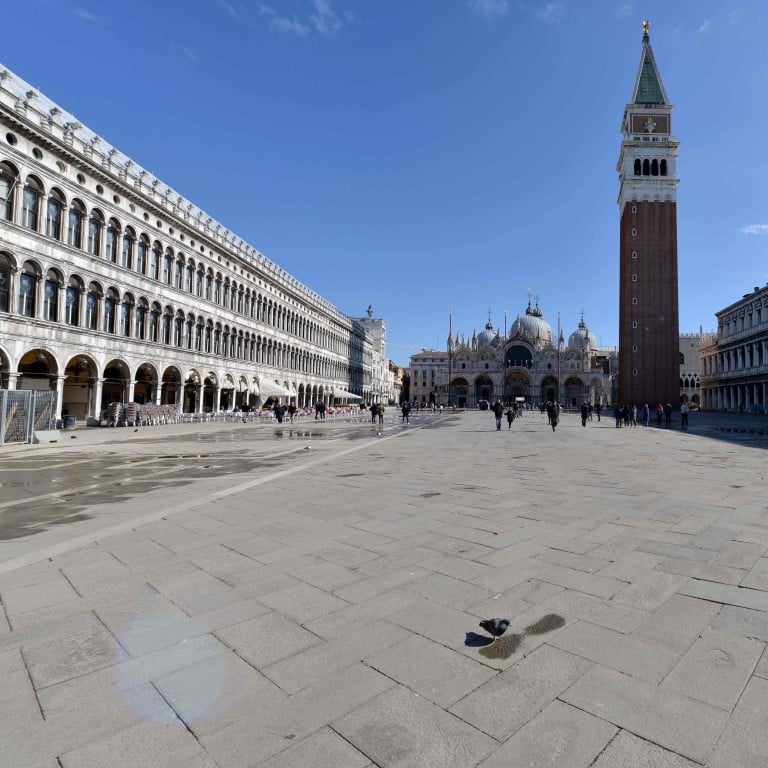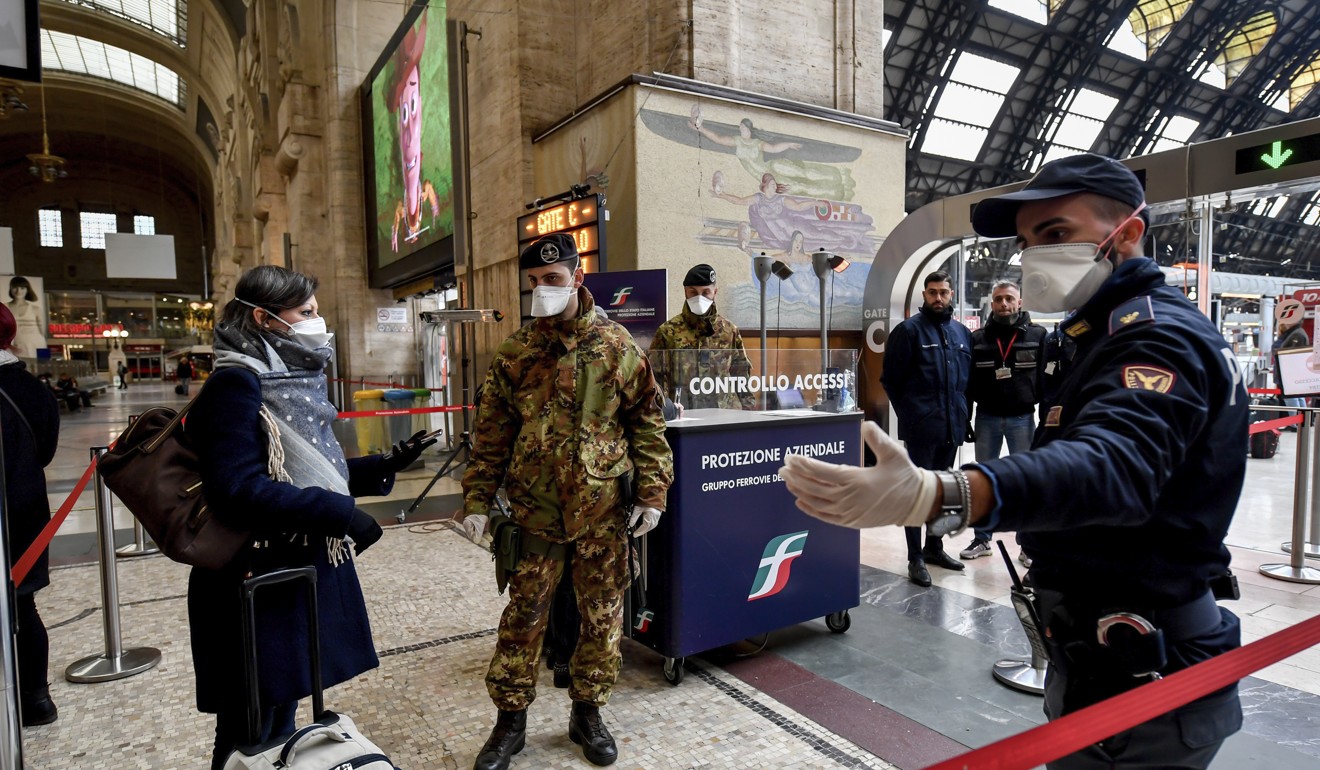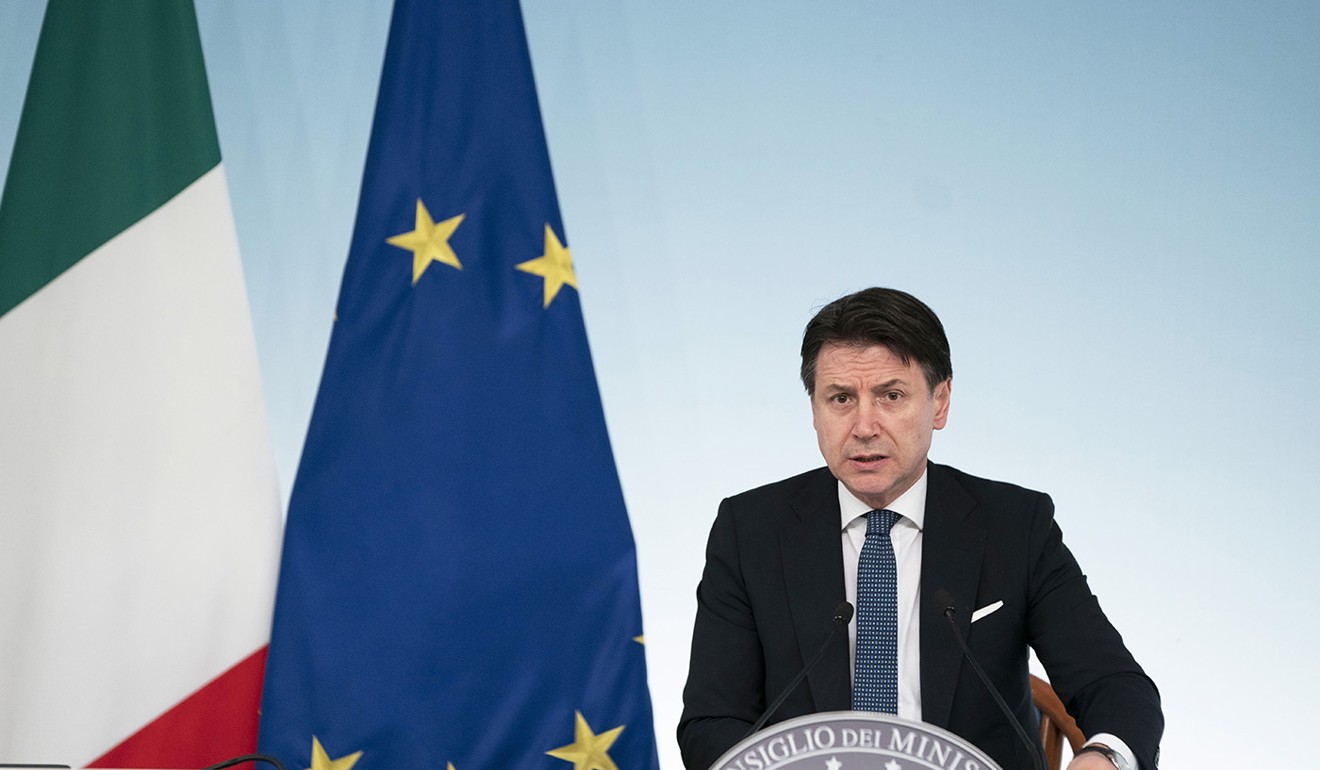
How Italy’s coronavirus lockdown differs from China’s
- The measures announced by Prime Minister Giuseppe Conte do not go as far as the steps taken in Wuhan and it remains unclear how they were being enforced
Italy’s response to the Covid-19 appears to mirror China’s lockdown of cities across the country, but the sharp differences in the two countries’ government systems mean the restrictions in place will be nowhere near as extensive.
Prime Minister Giuseppe Conte’s midnight government decree has been widely described as a virtual lockdown across much of its wealthy north, including the financial capital Milan.
“We are facing a national emergency. We chose from the beginning to take the line of truth and transparency and now we’re moving with lucidity and courage, with firmness and determination,” Conte told a press conference on Sunday.
In some ways, Conte’s measures appeared to be modelled on the Chinese authorities’ drastic lockdown of Wuhan, the city at the centre of the outbreak.
The lockdown in China started on January 23, when the city’s borders were closed, with all incoming and outgoing flights cancelled, public transport halted, and movement of people restricted.
At one point, nearly 50 cities and four provinces in China had implemented lockdown measures and restrictions remain in force across the country.
But Conte’s decree does not go as far as that, and politicians and media have criticised the prime minister’s measures as confusing.
The new measures say people should not enter or leave Lombardy, Italy’s richest region which has Milan as its capital.
Coronavirus: Italy faces its ‘darkest hour’ after government’s unprecedented steps to contain outbreak
The lockdown also extends to 14 provinces in four other regions, including the cities of Venice, Modena, Parma, Piacenza, Reggio Emilia and Rimini.
The unprecedented restrictions, which aim to limit gatherings and curb movement, will affect some 16 million people and stay in force until April 3.
Only people with proven, work-related reasons, or health problems will be allowed to move in and out of the exclusion zones and leave has been cancelled for health workers.
Sports facilities, bars and restaurants were ordered to close or to restrict entry and maintain a distance of at least a metre between people on their premises.
Restrictions have also been placed on prisons, with personal visits to inmates being banned until March 22 – restrictions that led to riots in two jails, including one that caused the death of six inmates in Modena.

However the Italian government did not stop businesses from operating as normal or blocking deliveries of supplies of goods provided appropriate protective measures were adopted.
It was also unclear how the restrictions on movement would be enforced if at all.
Conte was trying to strike a balance between curbing the spread of the virus and avoiding making harsh, restrictive decisions like in China.
But the head of Veneto, Luca Zaia, complained he had not been properly consulted and was unhappy that three provinces in his region, including Venice, had been included in the clampdown.
“We do not understand the rationale of a measure that appears scientifically disproportionate to the epidemiological trend,” he wrote on Facebook.
A major difference between the two countries’ measures is the ability for outsiders and foreigners to come in and out of the affected areas.
In China, all foreigners were barred from leaving Hubei, except those who were able to catch chartered flights organised by their home countries or territories, such as the US, Germany, Britain and Hong Kong.
Coronavirus: empty streets and paranoia as northern Italy endures lockdown, death toll surges
It is also unclear how far the Italian public will tolerate any attempts to control their movements and how far they will cooperate with the authorities.
“There is very little public awareness in Italy, even in northern Italy. People don’t take it seriously, literally no one wears a mask in public, and there’s no hand sanitiser in public areas,” said Pietro Borsano, a Thailand-based businessman and academic with relations in Turin.
“Italian people care more about their personal freedom, and are less disciplined than Chinese people.”
Conte’s policies also appear to give a lot of leeway to regional officials to decide what kind of measures to put in place – unlike China’s top-down approaches where central government officials instructed local subordinates and coordinated nationwide policies.

There are also fears that the health care system in Italy will struggle to cope with the outbreak claiming more than 360 lives in the country so far.
The head of the Lombardy regional crisis response unit, Antonio Pesenti, warned that it was “a step away from collapse”.
So far the outbreak in Italy has hit the country’s most prosperous areas and it would be a major concern if it spreads to the poorer south, where the health care and government systems risk being overwhelmed.
The president of Sicily Nello Musumeci warned that the health care system there would not be able to cope as well as it had in the north, and said anyone travelling to the island from the “red zones of the north” had a “duty” to inform doctors and go into self-quarantine.
Purchase the China AI Report 2020 brought to you by SCMP Research and enjoy a 20% discount (original price US$400). This 60-page all new intelligence report gives you first-hand insights and analysis into the latest industry developments and intelligence about China AI. Get exclusive access to our webinars for continuous learning, and interact with China AI executives in live Q&A. Offer valid until 31 March 2020.

